New Delhi’s Water Crisis: A Daily Struggle for Survival
New Delhi, India’s bustling capital with a population exceeding 20 million, faces a persistent and escalating water crisis. As temperatures soar and demand outstrips supply, residents in many parts of the city are forced to rely on water tankers, leading to chaotic scenes of desperation and conflict. The sight of men, women, and children scrambling for buckets of water from tankers has become a stark symbol of the city’s water woes. This article explores the challenges of New Delhi’s water supply, the public’s struggles with tanker dependency, and actionable steps to address this pressing issue.
The Water Crisis in New Delhi: A Growing Concern
New Delhi’s water demand is approximately 1,290 million gallons per day (MGD), yet the Delhi Jal Board (DJB), responsible for water distribution, struggles to meet this need, producing only around 998 MGD as of May 2024. The gap is exacerbated by factors such as:
- Pollution of Water Sources: The Yamuna River, a primary water source, is heavily polluted with ammonia levels often exceeding 2.5 parts per million (ppm), rendering treatment difficult and reducing output at plants like Wazirabad and Sonia Vihar.
- Over-Extraction of Groundwater: Groundwater extraction has surged from 86 MGD in 2020 to 135 MGD in 2024, depleting water tables and risking long-term sustainability.
- Inefficient Infrastructure: Up to 40% of treated water is lost due to leaky pipelines, illegal tapping, and mismanagement by the so-called “tanker mafia.”
- Climate Change and Heatwaves: Rising temperatures and erratic rainfall patterns increase water consumption while reducing available resources.
- Population Growth: Delhi’s population grows at 2.12% annually, straining existing water infrastructure.
Total Estimated Cost: Rs 17,250 crore (USD 2.3 billion) over 10 years, funded through public-private partnerships (PPPs), central schemes, and international loans
Enforce price caps on private tankers (Rs 1,000–1,500 per 10,000 liters) to curb exploitation
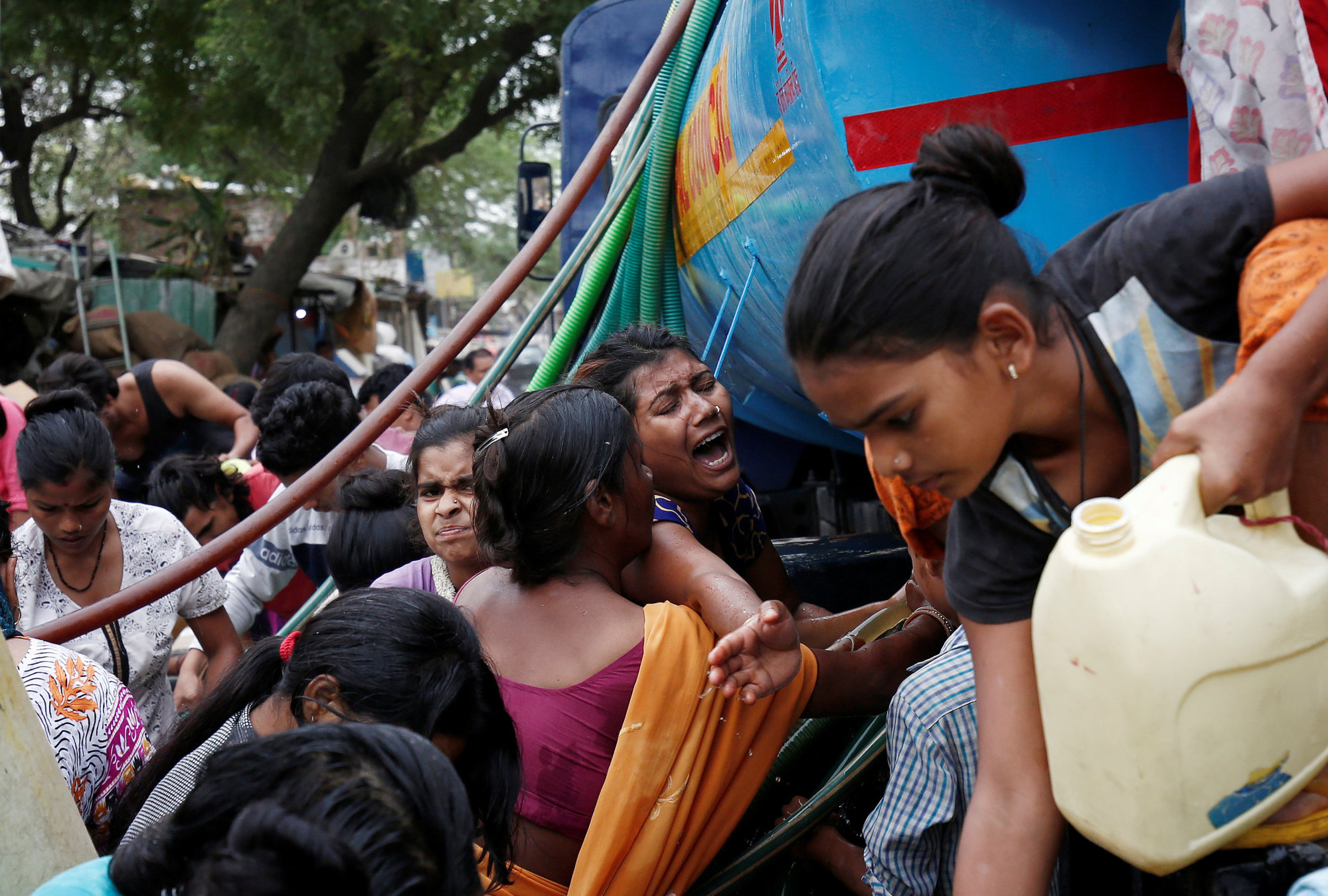
These factors disproportionately affect marginalized communities in unauthorized colonies and slums, where piped water is scarce, and reliance on tankers is a daily reality.
Public Fights Over Water Tankers: A Desperate Reality
In areas like Vivekanand Camp in Chanakya Puri, Sangam Vihar, and Trilokpuri Colony, residents gather daily on roadsides, clutching buckets and barrels, waiting for government or private water tankers. The arrival of a tanker often sparks chaos, with people pushing and jostling to secure their share. A resident of Vivekanand Camp described the experience as “feeling like a heart attack” due to the intense competition.
- Tanker Mafia Exploitation: Private tanker operators, often in collusion with officials, charge exorbitant rates—up to Rs 5,000 for a 10,000-liter tanker in areas like Khichdipur. Residents earning modest incomes spend up to Rs 3,000 monthly on water, straining household budgets.
- Violence and Fatalities: Conflicts over water have turned deadly. In 2024, a woman in East Delhi’s Farsh Bazar lost her life during a scuffle over a tanker. Fights are common, with police reporting that water-related disputes constitute nearly 50% of daily complaints in some areas.
- Inequitable Access: Affluent neighborhoods enjoy uninterrupted piped water, while slum dwellers rely on irregular tanker deliveries or contaminated borewells, highlighting stark inequalities.
Social media posts on X reflect public frustration, with visuals of residents climbing onto tankers and complaints about irregular deliveries unless bribes are paid. These scenes underscore the desperation and systemic failures in water distribution.
Steps to Solve New Delhi’s Water Supply Issues
Addressing New Delhi’s water crisis requires a multi-pronged approach combining infrastructure upgrades, policy reforms, and community engagement. Here are actionable steps to improve water supply and reduce tanker dependency:
- Enhance Water Treatment Infrastructure
- Complete Ammonia Treatment Plants: Expedite the construction of the ammonia treatment plant proposed by DJB to treat Yamuna water effectively, addressing high ammonia levels that disrupt production.
- Upgrade Water Treatment Plants: Increase capacity at plants like Sonia Vihar and Bhagirathi, which operated at just 30% capacity in October 2024 due to pollution.
- Reduce Pipeline Leakages: Invest in modernizing the 15,473 km pipeline network to minimize the 40% water loss due to leaks and illegal tapping.
- Combat the Tanker Mafia
- GPS-Enabled Tankers: The DJB’s deployment of 1,111 GPS-enabled tankers in 2025 aims to improve transparency and curb mafia activities. Real-time tracking via an IT dashboard ensures water reaches intended areas.
- Regulate Private Tankers: Enforce strict licensing and pricing regulations for private operators to prevent price gouging and illegal borewell use.
- Helpline Accessibility: Strengthen the DJB helpline (1916) to ensure prompt tanker delivery during shortages, addressing complaints about unresponsiveness
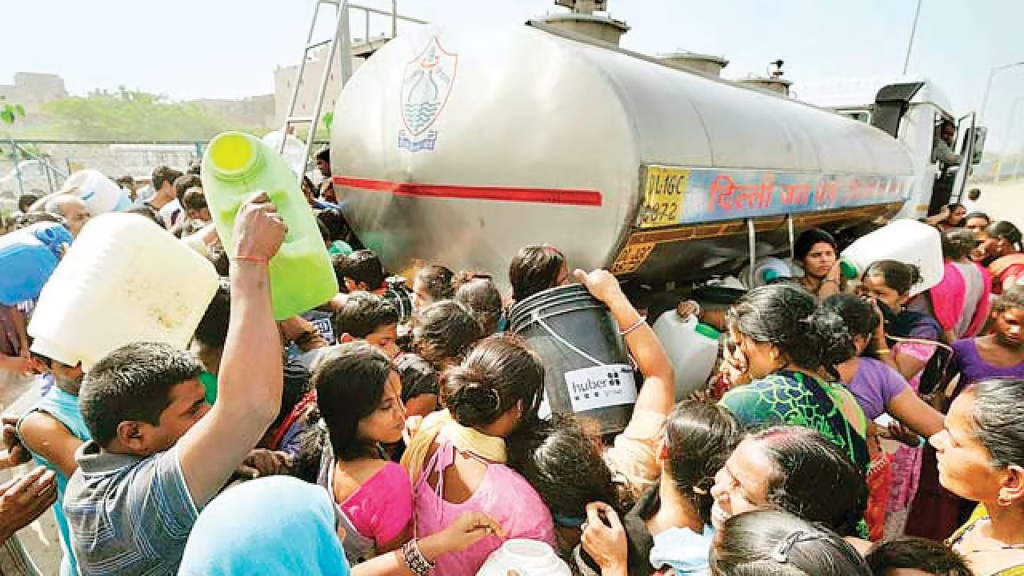
- Promote Sustainable Water Management
- Rainwater Harvesting: Leverage Delhi’s potential to harvest 907 billion liters annually through mandatory rooftop harvesting systems and community awareness campaigns.
- Groundwater Recharge: Implement aquifer mapping and artificial recharge programs to restore depleted water tables, as recommended by the Central Groundwater Board.
- Wastewater Recycling: Expand sewage treatment and wastewater reuse to reduce reliance on external sources like the Yamuna and Ganga rivers.
- Strengthen Inter-State Cooperation
- Resolve Water Disputes: Improve coordination with Haryana and Uttar Pradesh to ensure consistent raw water supply from the Yamuna and Ganga rivers. The Supreme Court’s 2024 directive to release surplus water from Himachal Pradesh is a step forward.
- Central Water Commission Oversight: Enhance transparency in managing barrages like Wazirabad, ITO, and Okhla to prevent supply disruptions.
- Community and Policy Interventions
- Crackdown on Water Misuse: Enforce fines (Rs 2,000) for wasteful practices like washing cars with hoses and disconnect illegal connections, as initiated in 2024.
- Public Awareness Campaigns: Educate residents on responsible water consumption to reduce demand, especially during heatwaves.
- Equitable Distribution: Prioritize piped water connections in unauthorized colonies and slums, reducing tanker dependency. The DJB’s goal to provide 24/7 tap water by 2027 is ambitious but critical.
- Climate-Resilient Planning
- Incorporate Climate Change in Policy: The Delhi Master Plan 2041 should set clear targets for reducing external water dependency and integrating climate-adaptive measures like drought-resistant infrastructure.
- Heatwave Preparedness: Develop contingency plans for increased summer demand, including additional tanker deployments and emergency water storage.
Delhi Government’s Investment in Water Infrastructure (2020–2025)
The Delhi government, led by the Aam Aadmi Party (AAP), has prioritized water infrastructure to address the crisis, with significant spending over the past five years. Key investments include:
- Pipeline Expansion: Before 2015, no unauthorized colonies had piped water. By 2024, 99.6% of these colonies were covered, with 7,300 km of new water pipelines and 4,243 km of sewer lines laid. Total spending on pipeline infrastructure is estimated at Rs 7,800 crore (USD 1.04 billion).
- Water Treatment Plants: Rs 2,500 crore allocated for upgrading plants like Sonia Vihar and Bhagirathi, and constructing an ammonia treatment facility to counter Yamuna pollution, boosting capacity by 100 MGD.
- Tanker Fleet Modernization: Rs 300 crore invested in 1,111 GPS-enabled tankers to improve delivery transparency and curb mafia influence.
- Sewage Treatment Plants (STPs): Rs 3,200 crore spent on STPs, including Asia’s largest 564-MLD facility at Okhla, increasing treatment capacity to 6,039 MLD.
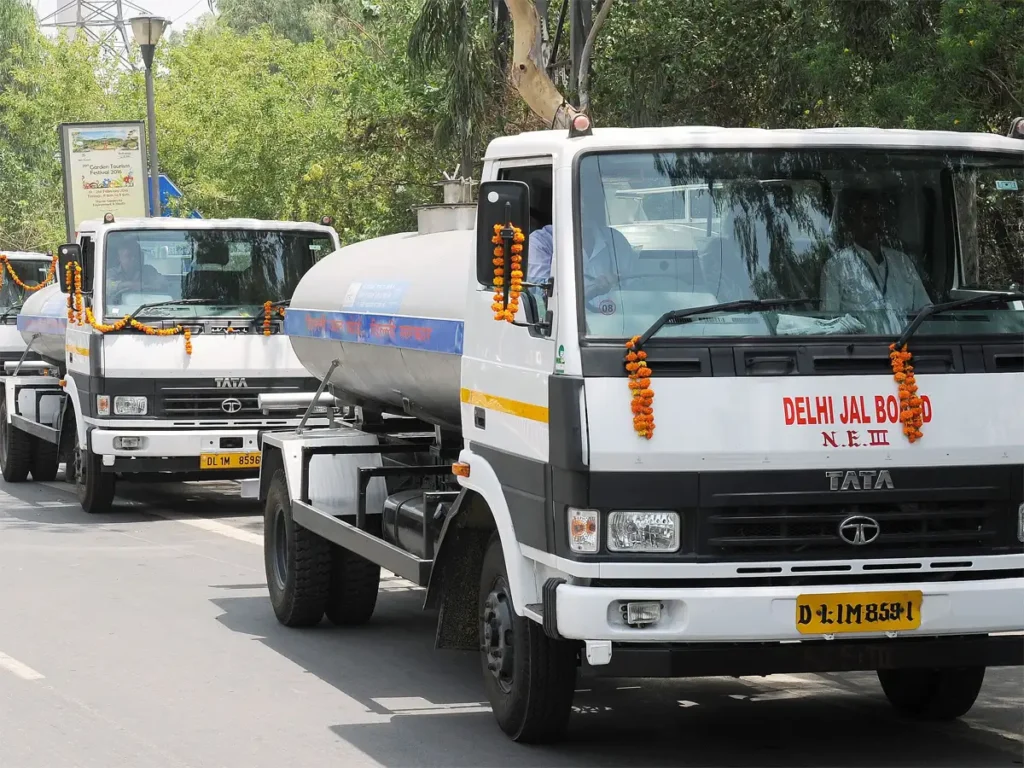
- Lake and Wetland Restoration: Rs 500 crore allocated for rejuvenating 25 urban lakes to enhance groundwater recharge and flood management, with projects like the Sanjay Lake restoration completed in 2023.
- Rainwater Harvesting and Groundwater Recharge: Rs 400 crore invested in mandatory rooftop harvesting systems and aquifer recharge programs, targeting 200 million liters annually.
Total Spending (2020–2025): Approximately Rs 14,700 crore (USD 1.96 billion), funded through state budgets, central schemes like Jal Jeevan Mission, and World Bank loans.
Comprehensive Model to Solve New Delhi’s Water Crisis
A sustainable solution requires a multi-faceted approach. The following model outlines key strategies:
- Infrastructure Upgrades
- Modernize 15,473 km of pipelines to reduce 40% water loss, costing Rs 5,000 crore over five years.
- Complete ammonia treatment plants by 2026 to treat 200 MGD of polluted Yamuna water.
- Expand STP capacity to treat 80% of the city’s 720 MLD sewage, requiring Rs 4,000 crore.
- Tanker Regulation
- Fully implement GPS tracking for all tankers, with Rs 100 crore for IT infrastructure.
- Enforce price caps on private tankers (Rs 1,000–1,500 per 10,000 liters) to curb exploitation.
- Strengthen DJB helpline (1916) with Rs 50 crore for real-time grievance redressal.
- Sustainable Water Management
- Scale up rainwater harvesting to capture 500 billion liters annually, with Rs 1,000 crore for city-wide systems.
- Invest Rs 2,000 crore in groundwater recharge through artificial aquifers and lake restoration.
- Promote wastewater recycling to reuse 50% of treated sewage (360 MLD) by 2030, costing Rs 1,500 crore.
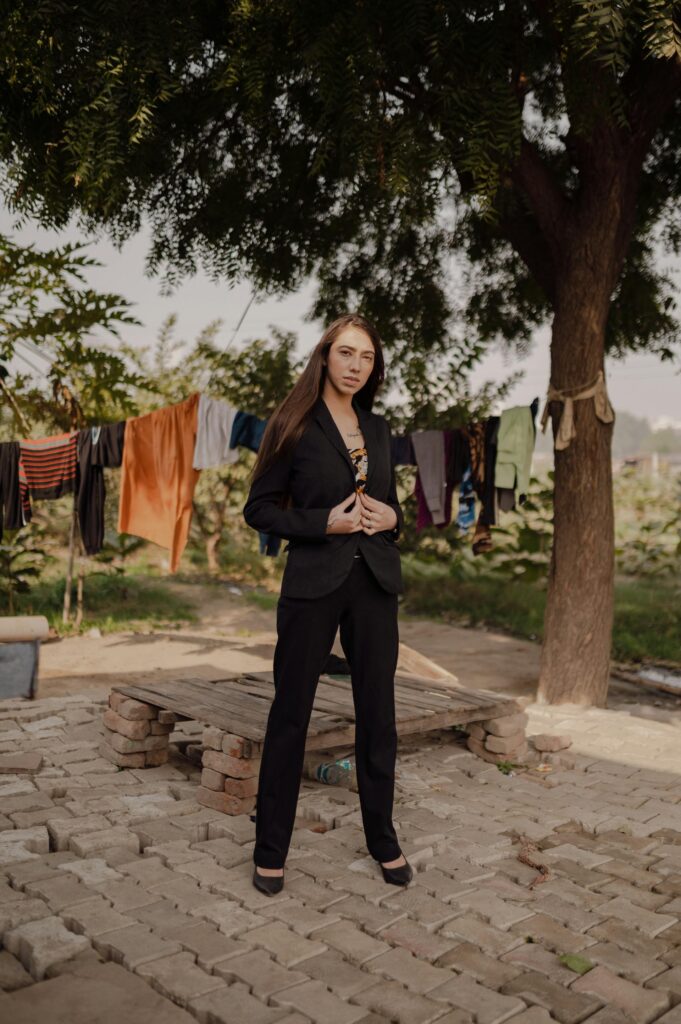
- Inter-State and Policy Reforms
- Secure Yamuna water sharing agreements with Haryana and Uttar Pradesh, backed by Rs 200 crore for negotiations and infrastructure.
- Enforce fines for water misuse (Rs 2,000 per violation) to reduce demand by 10%.
- Expand piped water to all slums by 2027, requiring Rs 3,000 crore.
- Community Engagement
- Launch campaigns to reduce per capita water use by 20%, with Rs 100 crore for awareness programs.
- Involve RWAs in monitoring tanker deliveries and reporting illegal tapping.
Total Estimated Cost: Rs 17,250 crore (USD 2.3 billion) over 10 years, funded through public-private partnerships (PPPs), central schemes, and international loans
Yakbos Technologies: Pioneering WATERTECH Solutions
Yakbos Technologies, a global leader in natural resource management and sustainable development, is making significant strides in the WATERTECH sector. Based in Northeast India with operations in Bengaluru, Yakbos focuses on innovative technologies to address water scarcity and quality challenges. Their contributions include:
- Smart Water Management Systems: Yakbos develops IoT-based solutions for real-time monitoring of water quality and distribution, reducing losses in urban systems like New Delhi’s leaky pipelines.
- Wastewater Treatment Innovations: Their modular treatment systems optimize industrial and municipal wastewater recycling, aligning with Delhi’s goal to reuse 360 MLD of sewage by 2030.
- Groundwater Recharge Technologies: Yakbos’ expertise in managed aquifer recharge supports projects like Delhi’s lake restoration, enhancing groundwater levels sustainably.
- Community-Centric Solutions: By integrating AI and data analytics, Yakbos empowers communities with tools to monitor and manage local water resources, reducing reliance on tankers.
Yakbos’ technologies complement government efforts and offer scalable solutions for cities like Bengaluru, where water scarcity mirrors Delhi’s challenges. Their work aligns with the global water tech market, projected to reach USD 18 billion by 2026, making them a key player for investors seeking impactful WATERTECH opportunities.
Encouraging Angel Investors to Back Yakbos Technologies for Water Solutions
Yakbos Technologies presents a unique seed investment opportunity for angel investors to address water scarcity in Bengaluru, Delhi, and Shillong, cities facing acute water challenges. With operations in Bengaluru and roots in Northeast India, Yakbos is well-positioned to scale WATERTECH solutions across diverse urban and semi-urban markets. Here’s why angel investors should consider seed funding:
- Market Opportunity: The Indian water tech market is projected to grow to USD 18 billion by 2026, driven by urbanization and water scarcity. Bengaluru’s 183 depleting lakes, Delhi’s 40% pipeline losses, and Shillong’s reliance on springs create urgent demand for Yakbos’ IoT and AI-driven solutions.
- Innovative Portfolio: Yakbos’ smart metering, wastewater treatment, and aquifer recharge technologies address critical needs, offering 20–30% ROI potential, as seen in water tech firms like Althion (Rs 3.6 crore raised in 2024).

- Government Support: Karnataka’s Rs 2,000 crore World Bank program, Delhi’s Rs 14,700 crore water investments, and Meghalaya’s water conservation initiatives provide a supportive ecosystem for Yakbos’ growth.
- Scalable Impact: Yakbos’ solutions reduce freshwater demand by up to 30% through recycling and smart monitoring, aligning with sustainability goals in Bengaluru, Delhi, and Shillong.
- Seed Investment Fit: Yakbos seeks seed funding of Rs 1–5 crore to expand R&D, pilot projects in Shillong’s spring conservation, and scale Bengaluru’s lake restoration efforts. Investors can gain equity stakes, mentorship roles, and access to networks like the Indian Angel Network.
Investor Call to Action:
Contact Yakbos Technologies via www.ytcventures.com to explore seed investment opportunities. Join a high-growth venture addressing water scarcity with cutting-edge technology, backed by government initiatives and a USD 18 billion market.
Send e-mail to investments@ytcventures.com or What’s app “WATERTECH” to +91-9380376419
The Path Forward: A Collective Responsibility
New Delhi’s water crisis is a complex issue rooted in infrastructure deficits, environmental challenges, and socio-economic disparities. The public’s reliance on tankers, coupled with conflicts and exploitation by the tanker mafia, highlights the urgency of systemic reforms. By investing in treatment plants, regulating tankers, promoting sustainable practices, and fostering inter-state cooperation, the city can move toward equitable and reliable water access.
Residents, too, must play a role by adopting water-saving habits and supporting conservation initiatives. The DJB’s efforts, such as GPS-enabled tankers and plans for 24/7 piped supply, are promising, but their success depends on transparent governance and community participation.
As New Delhi grapples with this crisis, the collective resolve of its government, civic agencies, and citizens will determine whether the city can secure a water-secure future. By addressing the root causes and implementing sustainable solutions, New Delhi can transform its water narrative from one of struggle to one of resilience.

Comments